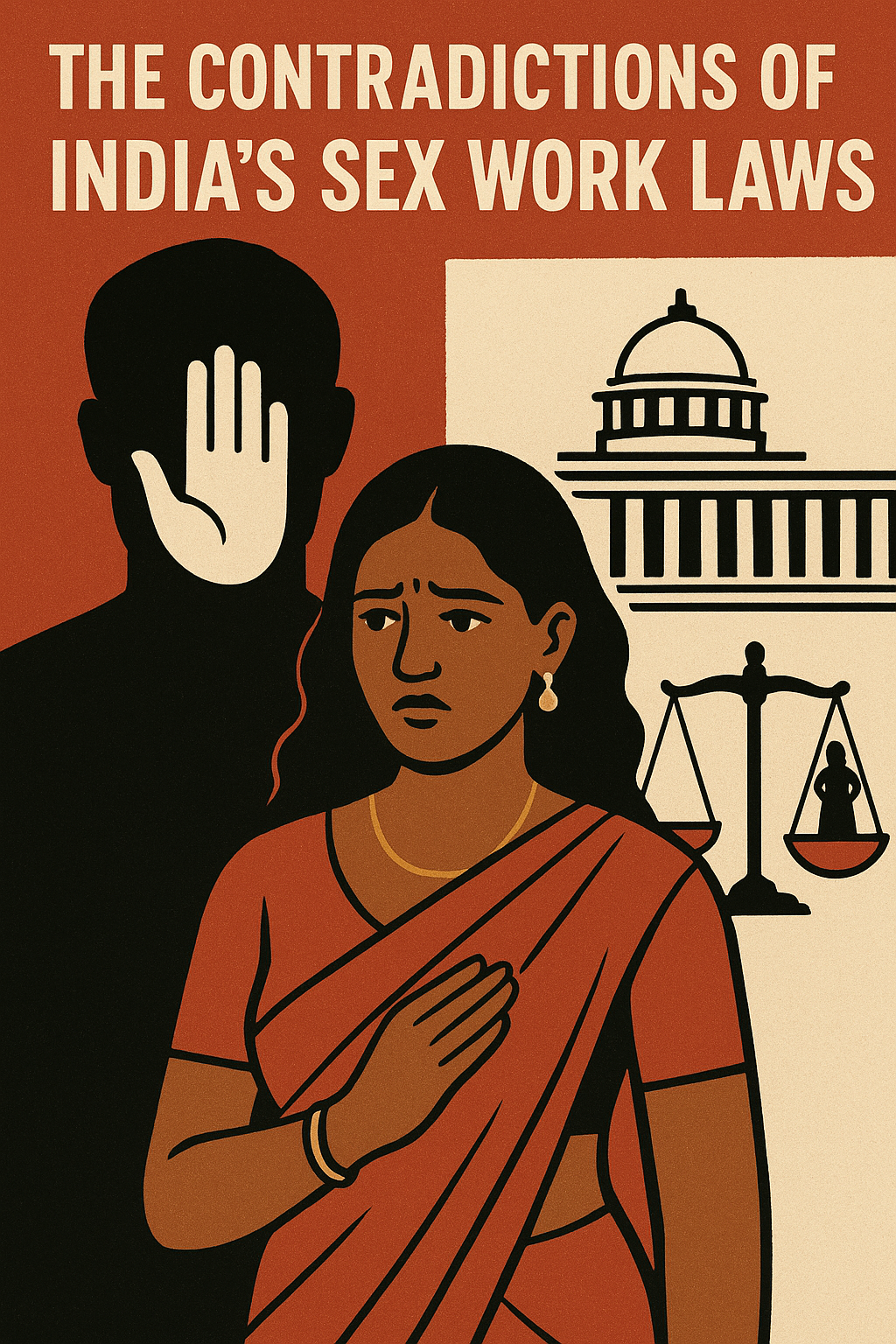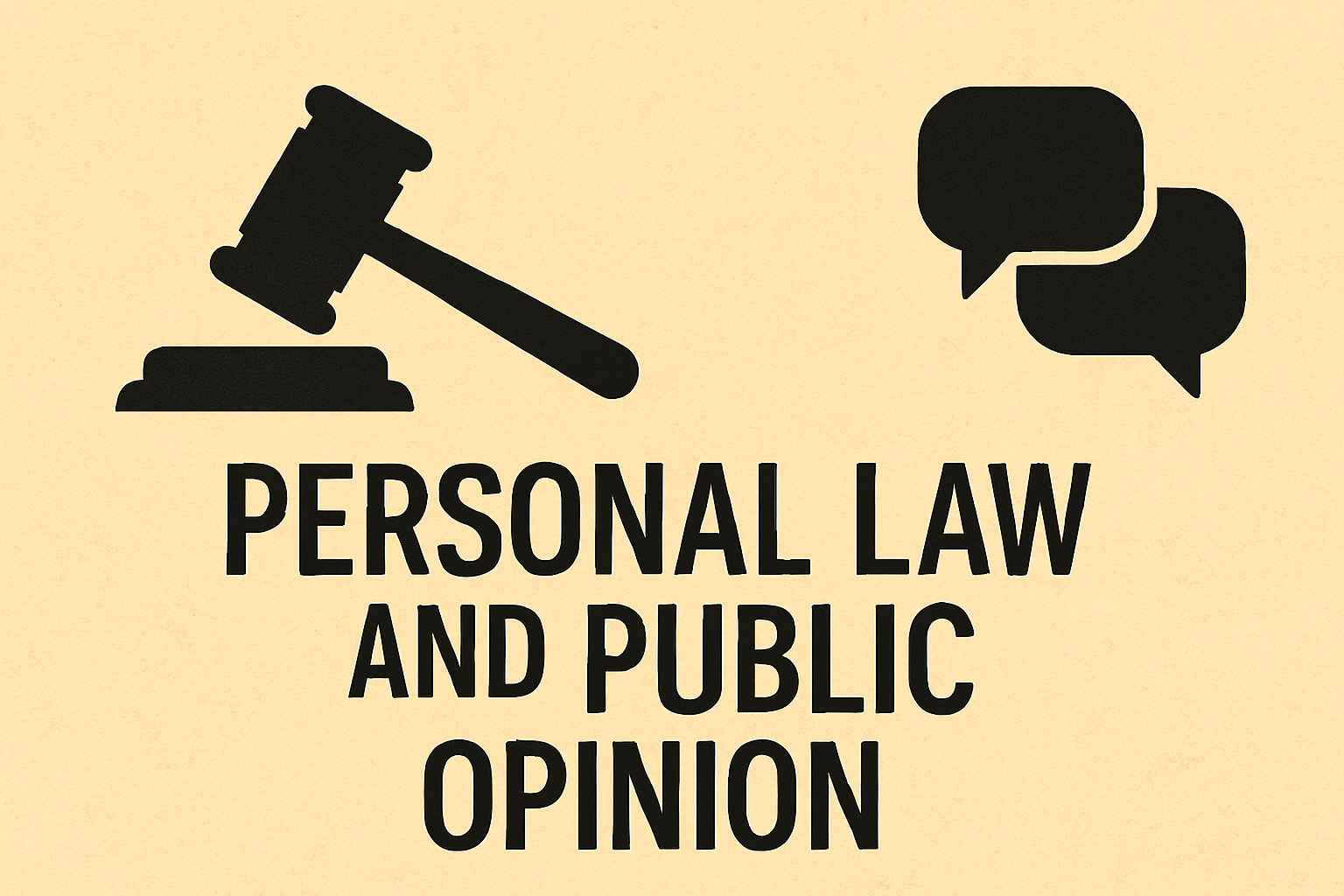



Author Name: Mehar Khurana
College: OP Jindal University
Introduction
Polygamy /pəˈlɪɡəmi/ (noun): the practice or custom of having more than one wife or husband at the same time. Polygamy in India is a controversial subject in its legal discourse. Historically
practiced amongst royalty, the elites and certain tribal groups, polygamy continues to evoke complex legal, social, and moral questions in India today. While Hindu personal law and the
Bharatiya Nyaya Sanhita prohibit bigamy, muslim personal law allows a man to have up to four wives under specific conditions. This differential treatment underscores the challenges of a plural
legal system. Critics argue that polygamy inherently undermines gender equality and women’s rights. Scholars like Flavia Agnes and Pratibha Jain have examined how personal laws, shaped
by religious traditions and state intervention, treat women unequally. Debates around polygamy have intensified in recent years with discussions around a Uniform
Civil code (UCC) especially following landmark judgements like Shayara Bano v. Union of India (2017), which questioned the gender implications of Muslim personal law. The larger
question remains whether a practice deemed lawful in one community but illegal in another can never be reconciled within a secular constitutional framework that upholds dignity for all,
without alienating minority rights or exacerbating communal anxieties.
Legal Framework
In India, the legality of polygamy is governed by religious personal laws. For Hindus, Jains, Sikhs, and Buddhists, the Hindu Marriage Act, 1955, strictly prohibits polygamy. Section 5 of
the Act requires monogamy as a condition for a valid marriage, while Section 82(1) under the Bharatiya Nyaya Sanhita 2024 quotes that it is illegal to marry someone else when you are still
married to someone else. Conversely, Muslim personal law, codified in the Muslim Personal Law (Shariat) Application Act, 1937, permits a Muslim man to have up to four wives, provided he
treats them equally and fairly. However, no such provisions exist for Muslim women, making the law asymmetrical in application. As discussed in Sarla Mudgal v. Union Of India, 1995,
converting to Islam solely to circumvent monogamy laws is illegal. The divergence in legal treatment, based on religion, presents both constitutional and ethical challenges.
Constitutional Conflict
The Constitution implications of polygamy involve a delicate balancing act between Articles 14, 15 and 25. Article 14 guarantees equality before the law, Article 15 prohibits discrimination
amongst citizens and Article 25 protects freedom of religion, which is often cited in defense of Muslim personal law. In Sharaya Bano v. Union of India, 2017, while triple talaq was declared unconstitutional, the Supreme Court left polygamy untouched, signaling the unresolved constitutional dilemma. Feminists legal scholars argue that this differential treatment amounts to
state-sanctioned gender discrimination, violating the spirit of equality and secularism enshrined in the constitution. Courts have been cautious to intrude into religious practices, but the
challenge remains to draw a firm line between freedom of religion and enforcement of fundamental rights. The growing jurisprudence on constitutional morality demands that the
The judiciary takes an intervention when personal laws perpetuates structural injustice.
Feminist Critiques
Polygamy has been heavily criticised from feminist perspectives for its inherent power imbalances. Flavia Agnes argues that religious personal laws, especially Muslim law in India,
often serve patriarchal interests under the guise of tradition. Thom Brooks critiques polygamy as “structural inegalitarian”- highlighting the fact that it disproportionately affects women’s
mental health, economic status, and social standing. Studies reveal that women in polygamy marriages experience lower self-esteem, higher rates of depression, and limited autonomy in
decision-making. The very structure of polygamy (one man multiple wives) perpetuates a gender hierarchy that views women as replaceable or secondary. Feminist legal theory stresses that
gender justice cannot be achieved unless personal laws are scrutinized and reformed to ensure equality within the family structure. The normative acceptance of unequal marital frameworks
underscores the embedded patriarchy in family law, making reform essential but deeply contested. Moreover, feminist scholars emphasise that true empowerment lies in giving women
the freedom to exit oppressive marital arrangements, which current laws fail to guarantee in practice.
Muslim Personal Law
Islamic jurisprudence allows polygamy but places strict conditions- such as equal treatment, justice and financial support for all wives. However, as several sources point out, verse 4:3 of the
The Quran, which permits polygamy, is often misinterpreted. The Quran itself acknowledges that equal treatment among multiple wives is nearly impossible (verse 4:129). Historically, polygamy
in islam was a contextual response to social crises, such as the Battle of Uhud, where many women were left widowed. In practice, however, the requirement of fairness is rarely enforced.
Cases like Ambattuparambil Abdulrahiman v. Khairunnisa (2010)) have emphasised that the wife’s consent and her perception of equality are essential suggesting that polygamy without
fairness amounts to cruelty. Even within the Muslim world, numerous scholars have argued that polygamy is not a divine imperative but a conditional allowance suited to specific historical
contexts- a nuance often lost in its modern-day application. As a result, many Muslim-majority countries like Tunisia and Turkey have moved to heavily regulate or even outlaw polygamy,
indicating the potential for reform within islamic framework themselves.
Hindu Law
Polygamy was once common in hindu society, especially amongst kings and zamindars. Ancient texts like the Mahabharata even sanctioned different numbers of wives based on caste. However,
post-independence India saw a shaft with the enactment of the Hindu Marriage Act, 1955, which made monogamy compulsory. Section 5(1) and Section 17 of the Act render second marriages void and punishable. Landmark judgements like Kanwal Ram v. Himachal Pradesh Administration, 1965, underscore the need to prove essential marriage ceremonies to secure
conviction under Section 82 BNS. Yet, loopholes remain, particularly when men convert to Islam to practice polygamy, a practice condemned in Sarla mudgal for violating the integrity of
marriage and evading monogamy laws. Even today, de facto polygamy persists among Hindus in rural India, often hidden to low legal literacy and socio-cultural acceptance, despite formal legal
prohibition. In thai regard, the difference between law in books and law in action becomes glaringly evident.
Uniform Civil Code
The debate over the Uniform Civil Code (UCC) has reignited with recent initiatives such as Uttarakhand’s UCC draft, which proposes banning polygamy across all religions. Proponents
argue that a UCC would ensure gender justice and uphold constitutional secularism. However, critics view it as a threat to cultural and religious autonomy, particularly for minorities. Flavia
Agnes cautions against a majoritarian imposition disguised as a legal reform. The challenge lies in balancing individual rights and group identity, Which Article 44 of the Constitution directs
that state to drive for a UCC, its implementation remains politically sensitive, Until a consensual and inclusive framework is developed, personal laws will continue to govern family relations
unevenly. The UCC must be approached not as a tool of homogenization but as a means to fulfill constitutional promises of equality and dignity for all, especially women. Drawing from Goa’s
successful example of a common family law, India can envision a future where diversity and Equality coexists.
Gender Justice and the Way Forward
The persistence of polygamy undermines gender justice and equality. Whether practiced legally under Muslim law or illegally under other personal laws, the implications are deeply gendered.
Second wives often face economic insecurity, social stigma, and lack of legal recognition. Courts have increasingly acknowledged these harms. The Shah Bano case, 1985, remains a landmark in asserting women’s rights within the bounds of personal law. However, piecemeal judicial activism is insufficient. Legal reform must be comprehensive, culturally sensitive, and guided by
constitutional values of dignity, equality and justice. Legal aid, public awareness and stronger enforcement mechanisms must accompany statutory changes to ensure that gender justice is not
merely aspirational but realised on the ground. A multi-pronged strategy involving legal reform,judicial empathy, and civil society engagement is the only way forward.Conclusion
Polygamy in India sits at the intersection of law, religion and gender justice. The legal system’s accommodation of religious personal laws has created a fragmented framework where the same
conduct is legal for one community and criminal for another. This pluralism, while reflective of India’s diversity raises pressing questions about equality, justice and state neutrality. The future
of polygamy in India cannot be decided solely through penal laws or religious edicts; it requires participatory reform grounded in constitutional morality. As feminist scholars rightly argue,
Family law reform is a critical frontier for securing substantive equality. Only through inclusive dialogue and careful legal drafting can India hope to uphold the rights of all its citizens,
irrespective of gender or faith. Polygamy must be addressed not in isolation but as part of a larger struggle for equal citizenship, modern legal standards and a humane family law regime. It
is only then that the promise of justice- social, legal and constitutional- can be fully realised.
Grounds And Procedure For Challenging The Appointment Of Arbitrator In India
References
* Brooks, Thom. “The Problem with Polygamy.” Philosophical Topics, vol. 37, no. 2, 2009, pp. 109–122. JSTOR.
* Das, Purba, and Manika Kamthan. “Impact of Polygamy on Indian Women and Children: A Critical Study.” Res Militaris, vol. 13, no. 3, 2023.
* Capoor, Medhavi. “Rights of Women in Polygamous Relationships in India.” Indian Journal of Law and Legal Research, vol. 5, no. 2.
* Anwar, Nadia. Review of Purdah and Polygamy: Life in an Indian Muslim Household by Iqbalunnisa Hussain. Journal of Postcolonial Writing, 2020.
* Agnes, Flavia. “Hindu Men, Monogamy and Uniform Civil Code.” Economic and Political Weekly, vol. 30, no. 50, 1995, pp. 3236–3241.
* Jain, Pratibha. Various works cited in legal reform debates concerning personal laws and the Uniform Civil Code. (General reference)
* National Family Health Survey – 4 (NFHS-4). Ministry of Health and Family Welfare, Government of India, 2015–16.
* Law Commission of India. Reports on Reform of Family Law and Bigamy—Reports No. 227, 242, and 264.